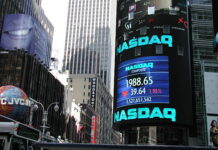Markets
Most analysts and policy makers apparently maintain the working hypothesis that the impact of the new corona waves/the Omicron variant on global growth will be muted, at least manageable. However, global investors, and in particular European ones, for now still keep some ‘better safe than sorry attitude’. The Fed at the same time turning its focus to re-anchoring inflation (expectations) rather than support growth or employment only complicates the story for risk assets. In a session deprived of key economic data, both in the US and EMU, the way south still was the path or least resistance for equities. European indices still had some negative catching-up to do after yesterday’s late-session setback in the US. Losses are substantial with the likes of the EuroStoxx 50 losing up to 2.0%. US indices went from a flat opening to gains of 1.4% (DJI). In fixed income, US and European markets take a completely different path. The US curve continues its bear flattening trend as markets further adapt the new guidance from Fed Chair Powell and Loretta Mester, highlighting rising chances for a rate lift-off already in spring of next year. US jobless claims only give a very fragmented insight on US labour market developments. Still at 220k, this week’s report again printed better than expected. US yields are rising between 4 bpn (2-y) and unchanged (30-y). The picture for the US 10-y yield remains ‘fragile’, but for now the 1.40/41% support area survives. The bottoming out process in US real yields also continues (10-y -1.02%). Yields currently ease off the intraday ‘highs’ on headlines that Russia is proposing a OPEC+ production hike. In volatile trading, the Brent oil price currently trades near $67 p/b, dampening inflation expectations. Contrary to the US, German/European yields are giving up some key support levels, with the German 10-y yield smashing below the key -0.35% support (currently -0.39%). European governments, including Germany, taking additional Covid containment measures, clearly is seen as complicating any ECB steps to join the Fed’s anti-inflationary approach. German yields are declining between 3.3 bps (2-y) and 5 bps (5 & 10-y). Despite the European risk-off, intra-EMU spreads even show a modest narrowing, probably betting that ECB support might be withdrawn slower than expected.
As was often the case of late, FX again decoupled from the trends in fixed income and equity. Despite losing interest rate support and despite a mainly European, Omicron driven risk-off, EUR/USD today showed remarkable resilience, even gaining modestly on a daily basis (1.1345). The yen also remains well bid, but additional interest rate support keeps USD/JPY north of the 112.70/53 support area. Sterling trades slightly in the defensive, but the EUR/GBP 0.8550 resistance area is holding. The lower oil price is causing additional losses for the like of the loonie (USD/CAD 1.2815) and the Norwegian Krone (EUR/NOK 10.31), but the damage could have been worse.News Headlines
The Hungarian central bank raised its one-week deposit rate from 2.90% to 3.10%. By offering to pay a rate higher than the base rate (2.10%), the MNB extracts HUF liquidity from markets to its deposit facility. This mechanism pushes (money market) rates higher and supports the forint. Both are important tools in fighting inflation well above target (6.5% y/y in October). The MNB decides on the deposit rate on a weekly basis, allowing for more flexibility than the monthly base rate policy meeting. EUR/HUF initially weakened (HUF strength) to 361 after the MNB’s decision. The outright risk-off environment caps HUF gains however to 362.24 currently.
The United Nation’s food price index rose with another 1.2% in November to surpass the 2008 peak as the cost of grains and dairy went up. It is now just a mere 3.5% away from the all-time high reached in 2011. The UN expects that level will be hit even before the year is over. Both in 2008 and 2011 high prices contributed to global food crises with mass protests erupting as well. Food inflation today is the result of bad harvests, increased shipping rates and worker shortages. It strongly affects consumers’ disposable income, which was already hit badly by surging energy costs.













